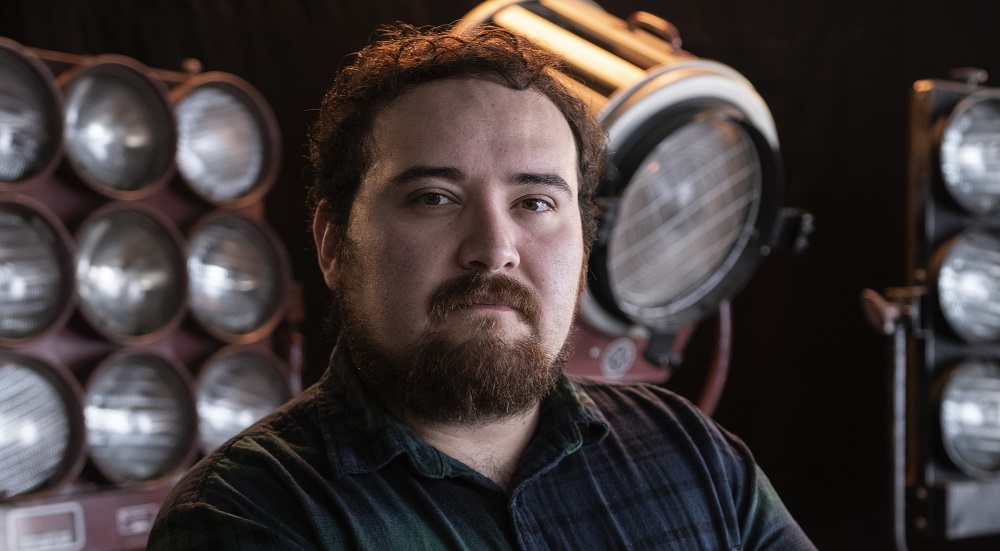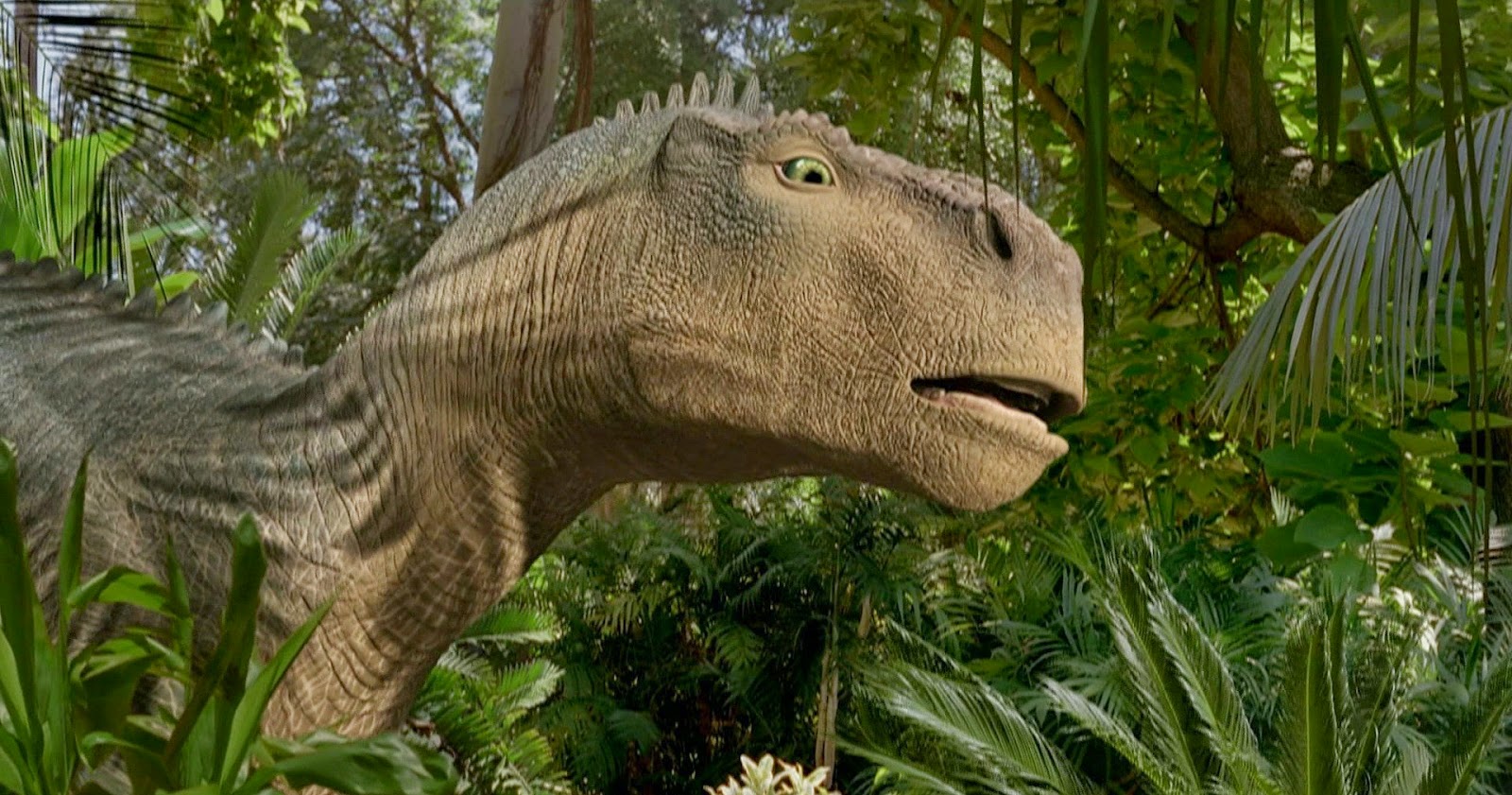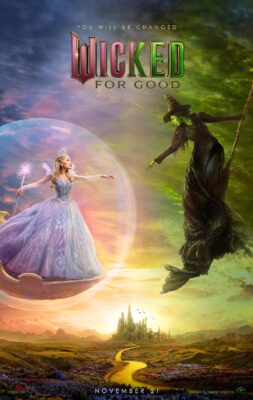Like the long-gone creatures it tells of, Disney’s 2000 film “Dinosaur” is buried in the sands of recent Hollywood history. It’s a fossil from a time when CG was still not the norm, but was gaining popularity in traditional animation techniques that made the studio a giant in the 20th century.
Released on May 19, 2000, in between two 2D features, “Tarzan” and “The Emperor’s New Groove,” this prehistoric adventure marked a turning point for Walt Disney Animation. At the time, Pixar had already found success with the two first installments of the “Toy Story” franchise and “A Bug’s Life,” while DreamWorks had also ventured into the 3D realm with “Antz.” And though Disney continued to go the hand-drawn route for a few more years after, they grasped where the industry was heading and used “Dinosaur” as a prototype.
Back in the late ’80s, the technology that would eventually bring it to life was still in its infancy. Paul Verhoeven was meant to direct an original screenplay by Walon Green, a project imagined as a serious two-hander focused on the lone journey of a dinosaur and a lemur. Sadly, we will likely never learn how this presumably more adult, and mix-medium piece using stop-motion and puppets, would have turned out.
Evidently, elements of that concept survived when Disney picked up the project. But by the time it reached co-directors Ralph Zondag and Eric Leighton after development limbo and multiple changes in leadership, the ambition was now to create a family product that capitalized on children’s fascination with the massive beasts that populated our world 65 million years ago.
Though nearly a dozen people were involved in the writing at different stages, the final screenplay was credited to John Harrison and Robert Nelson Jacobs. It tells the story of Aladar (voiced by D.B. Sweeney), an Iguanodon raised by lemurs in the Cretaceous Period, who must join a migrating herd with his adoptive family after their home is destroy by a meteor. Inevitably, comparisons to Don Bluth’s “The Land Before Time” have always abounded.

From a technical standpoint, “Dinosaur” would not only be Disney’s first foray into crafting fully 3D characters, but a ground for experimentation on a breathtakingly large scale. The aim was to give audiences the chance of witnessing a photorealistic interpretation of a lost world we could only imagine when visiting museums. Of course, there had to be a moving narrative propelling it, but the idea of blending CG dinosaurs with live-action backgrounds is what made it exponentially ambitious by design.
In order to tackle such a tall order, Disney set up a new VFX studio known as The Secret Lab at an estimated cost of around $50 million on top of the movie’s reported budget of $127.5 million, a stratospherically expensive price tag for any film, then or now. Aside from building the facility by merging preexisting properties, the studio was comprised of artists who were still not versed in computer animation software. Most of the 900 people that worked on “Dinosaur” had to be trained for a year and half to attain the needed skill set.
The unprecedented nature of the project pushed the filmmakers and their large team to come up with a singular production plan, which entailed capturing images in the real world to later manipulate them digitally. More importantly, they developed programs to make the dinosaurs and lemurs on screen as realistic as possible while still being anthropomorphic. These ancient beings needed to talk and emote.
First, they took some major creative liberties with timelines and the physiognomy of the Iguanodons. Lemurs didn’t exist at the same as dinosaurs (they separated by about 50 million years), but the furry animals provided a familiar humanity that supported the emotional through-line. On the other hand, Iguanodons had beaks, but these didn’t allow for the expressiveness needed in the protagonist, so they opted from removing them and instead adding lips that would make for a more humanoid movement when talking.
Animators worked with Mug Shot, a tool that allowed them to blend shapes within the popular Maya program to manipulate facial expressions in their digital dinos. Similarly, there was great attention to muscle structures that comprise each of their bodies and to the way the skin reacts to movement. Even some of these elements seem commonplace for our 2020 standards, two decades ago these were revolutionary advancements.

One of the most astounding technical achievements the “Dinosaur” team pioneered was designing a digital mechanism to cover the bodies of the lemur family with believable fur, which had to react to wind, dust, and water. This new tool was later employed to create the grass we see on screen. Originally the team tried to implement images of real grass patches, but these were too still and didn’t interact properly with creatures’ movement. A curious fact is that grass didn’t exist during that period, but the anachronistic choice helped enliven the CG set.
Impressively, the backgrounds featured throughout include live action footage shot across the globe. In the six-minute opening alone there are vistas from Venezuela, Hawaii, Samoa, Florida, Australia, and Southern California. Once the storyboards were completed, live-action units would scour the world to find locations that would match what the story demanded and photograph it.
That initial photographic reference from multiple corners of the world would be brought back into the studio for the team to translate them into a tridimensional model using 3D WorkBook, a program that allowed them to work on the camera angles and have a real sense of the dinosaurs’ dimensions within the spaces. Then the live-action filmmakers would return to those real locations and shoot the scenes taking into account the blocking information created digitally to capture scenes pretending as if the dinosaurs were actually there. Only resources like those at Disney could support the globetrotting process.
Other aspects of the production that at first glance we could assume are digital were also created in reality. For example, during the sequence in which the meteor falls on the water creating a “Monster Cloud,” many of the explosions in the final film were done at the Disney Ranch in Burbank. When we see Aladar running away from the fallout, the flares we see and the objects crashing on the ground are practical effects.
In turn, the destruction of Lemur Island and the nearby cliff were captured by blowing up miniature versions of those sets for added realism. For a later scene, in which a lonely and aggressive Bruton (Peter Siragusa) joins Aladar and his friends, the production built a miniature cave to a 1/6 of scale since they couldn’t find one that was large enough to realistically “fit” the imaginary characters and because they needed to have control of the lighting and the movement of the rocks within it.
Many of the aerial shots and other sequences that required the camera to move at the speed of the massive subjects were shot using the Dino Cam, which is what the production named the camera rig that could tower as tall as 50 feet; it would fly through the skies or even very close to the ground to give us the sense that we were moving with the dinosaurs. A great example of its use is early on, when the villainous Carnotaurus is chasing its prey.
Each final frame in “Dinosaur” is an intricate composite of multiple plates that integrated the live-action backgrounds with CG characters, along with a mix of digital and practical effects. This was the kind of movie magic that could enrapture a young kid’s imagination.

Far from being a box office bomb, the film amassed $349.8 million worldwide. But as much as “Dinosaur” was praised for being a visual marvel upon its release, the general critical consensus pointed to a screenplay that felt derivative and simplistic. The film’s existence was only briefly revived when Pixar’s “The Good Dinosaur,” considered one of the studio’s worst releases, walked similar ground and caused people to reference its predecessor.
“Dinosaur” was released a year before the Academy began awarding the Best Animated Feature Oscar, which in 2001 had three CG nominees, and failed to received a nomination for Best Visual Effects. As for Zondag and Leighton, neither have directed another film since; however, both continue to work in the medium in different areas of animation departments of features and TV shows.
Watching “Dinosaur” 20 years after its original release, it’s easy to see that its pursuit of spectacle trumped the ideas of plot originality, or even the moral complexity that could have derived from a story about Earth’s instinctual and enormous inhabitants. Still, it has great value as a relic from a time when the new millennium promised a new, better way of filmmaking that would satisfy our hunger for visions beyond our reach. Even if film’s mark is more ephemeral, it’s worth revisiting if only to long for the innovation and risk-taking greatness that seems mostly extinct in studio fare these days.












